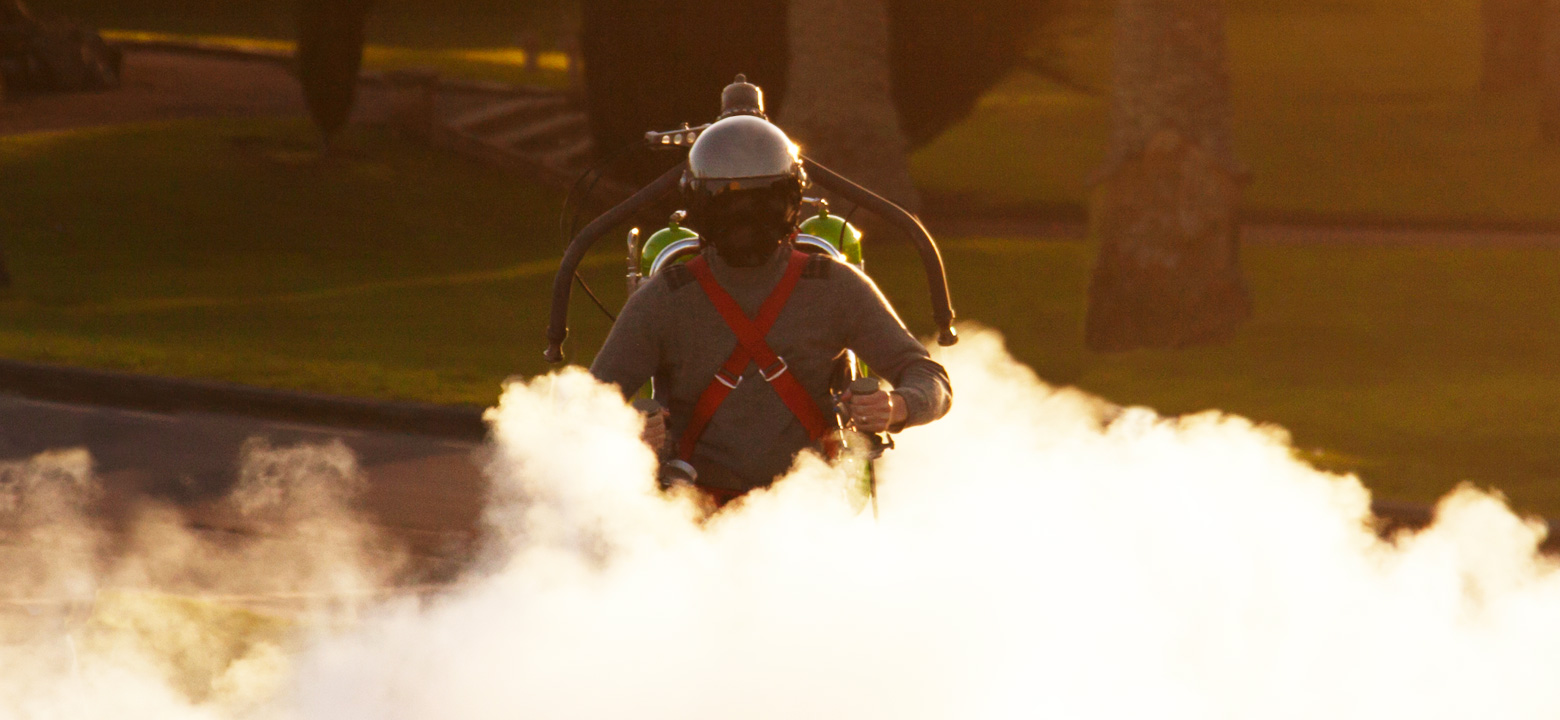
Jetpacks have always seemed like an undeniably cool, if impractical, piece of battlefield technology. While they show up in comics, movies, and video games, their real-world applications have been limited—until now. The US military has been soliciting concepts for “personal air mobility” systems, setting the stage for further tests to see whether jetpacks would make a feasible addition to their ranks.
Jetpacks are far older than they seem. The first one, a wearable, winged device propelled using oxygen and methane, was designed and patented in 1919. While the jetpack itself was never built, it is the earliest example of the concept.
After this came various designs for liquid-fueled devices. Justin Capră, a Romanian inventor, created a “flying rucksack” in 1956. Two years later, engineers Garry Burdett and Alexander Bohr created “Project Grasshopper,” which was powered by liquid nitrogen. Two years after that, in 1960, the US Army commissioned Bell Aerosystems to create a wearable propulsion device.
Today, inventors and enthusiasts continue to create their own devices based on the Bell prototype. Many of these are propelled by hydrogen peroxide decomposition. They are low weight, but their propulsion mechanism means that they can only reach low altitudes and remain airborne for roughly thirty seconds. Military-grade jetpacks will have to be able to reach medium altitudes and cover a distance of several miles to be useable.
Jetpacks are fast and extremely maneuverable, allowing individuals to rise above battlefields and perform reconnaissance work discreetly. Unlike other vehicles, they're smaller and harder to detect. In the event of an attack, having soldiers in individual propulsion devices would minimize casualties. Jetpacks would also be an ideal way to deliver rapid medical responses in remote or difficult-to-reach areas.
Jetpacks are also relatively easy to use. Technologically, they're fairly simple—there's a device to provide thrust, a throttle to control it, and directional controls. Military models may be equipped with weapons, but the planning and development isn't quite there yet.
Jetpacks have a few disadvantages as vehicles. For one, they can't run for very long. Their fuel capacity is limited, which also limits the distance they can travel, and they tend to generate a lot of heat. This excess heat doesn't just damage the jetpack's components, it could potentially harm the operator.
The devices also tend to be noisy, which would be less than desirable for stealth missions. Too much noise is also a problem in situations that rely on auditory awareness—a sound not only allows enemies to zero in on a soldier's location, it also prevents soldiers from hearing their environment.
The Defense Advanced Research Projects Agency (DARPA) has specified that any proposals must be for a device capable of carrying a single operator for at least 3.1 miles at low to medium altitudes. Setting it up should not take longer than ten minutes, and involve few or no tools. They are particularly interested in designs that have solved the issues of excess heat and noise.
Advancements in automated fabrication, like 3D printing, have made jetpack technology more feasible and less expensive than before. With a 3D printer, it's possible to create and alter parts on the fly. This reduces the time and money spent on producing prototypes.
One particular jetpack design, the Jet Suit by Gravity Industries, costs approximately $440,000. This is one of the devices currently being evaluated by the US Special Operations Command.
The deadline for proposals is April 20th, 2021. After this comes a six-month trial, potentially followed by a longer second phase. It's not yet known exactly when if ever, jetpacks might appear on the battlefield. Experts point out that military technology often ends up used in ways for which it wasn't originally intended if it gets used at all. If jetpacks are not found to be feasible for military applications, they may still reach the civilian market.
Military jetpacks would simplify supply drops and medical missions, as well as help keep soldiers safe by providing speed and maneuverability on the battlefield. While the military has been exploring jetpacks since the late 1950s, advances in fabrication have finally made the technology more feasible. This proposal and test period will allow them to evaluate the current state of this tech and determine for which, if any, military applications may be suitable.